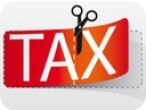Aug 16, 2024
Optimal Solutions to Address Higher Taxes vs. Lower Spending
TaxesOptimal Solutions to Address Higher Taxes vs. Lower Spending
Optimal Solutions to Address Higher Taxes vs. Lower Spending
The debate over whether a government should address budget deficits and economic inefficiencies by raising taxes or reducing spending is an enduring one. Economists, policymakers, and the public weigh in on these strategies, but the optimal solution often lies in a nuanced approach tailored to the unique economic environment. This blog post aims to explore the merits and drawbacks of both strategies while suggesting practical solutions for a balanced fiscal policy.
Understanding Higher Taxes
Raising taxes can provide an immediate boost to government revenue, which can be used to fund essential public services and reduce public debt. However, higher taxes can also have adverse effects on economic growth and individual savings. Here are some key points to consider:
- Revenue Generation: Higher taxes can quickly fill the government coffers, providing essential funds for public services like healthcare, education, and infrastructure development.
- Economic Growth: Elevated taxes can discourage investments and reduce disposable income, potentially slowing economic growth. High tax rates may lead to diminished incentives for entrepreneurship and innovation.
- Equity: Progressive taxation can lead to a more equitable distribution of wealth. However, the burden of higher taxes can disproportionately impact middle- and lower-income groups.
- Administrative Complexity: Implementing higher taxes often involves complex compliance procedures, which can create additional administrative costs and challenges.
- Long-Term Viability: Persistent high taxes may encourage tax evasion and capital flight, undermining the long-term sustainability of revenue streams.
Lower Spending: A Double-Edged Sword
On the flip side, reducing government spending can lead to immediate budget relief and potentially reduce national debt, but it can also lead to reduced public services and economic stagnation. Let's delve into the pros and cons:
- Budget Relief: Cutting spending can provide quick relief for budget deficits, helping to stabilize the financial health of a nation.
- Debt Reduction: Lower expenditures can reduce the need for borrowing, leading to lower national debt levels and interest payments over time.
- Service Cuts: Reducing public spending often means cutting back on essential services such as healthcare, education, and social security, which can harm the most vulnerable populations.
- Economic Impact: Lower spending can lead to a decrease in government contracts and subsidies, which may impact businesses and slow down economic growth.
- Social Welfare: Maintaining or even increasing spending in critical areas can ensure social stability and promote long-term growth by supporting human capital development.
The Optimal Solution: A Balanced Approach
Addressing the dilemma of higher taxes vs. lower spending requires a balanced and multifaceted approach. Policymakers should consider the following strategies to formulate an optimal solution:
- Targeted Taxation: Implementing a progressive tax system that increases rates for higher-income brackets while providing relief for lower-income groups can create a more equitable solution.
- Spending Efficiency: Focus on improving the efficiency of existing government programs and services to achieve more with less, potentially reducing the need for drastic spending cuts.
- Public-Private Partnerships: Encourage collaborations between the government and private sector to fund and manage public services, reducing the financial burden on the government.
- Gradual Adjustments: Implement gradual tax increases or spending reductions to prevent economic shocks and provide time for adaptation.
- Balanced Budget Rules: Enforce balanced budget rules that require the government to maintain fiscal discipline, providing a framework for sustainable long-term economic policies.
Conclusion
In the debate between higher taxes and lower spending, there is no one-size-fits-all solution. The optimal approach requires a careful analysis of the economic context, social needs, and long-term objectives. By adopting a balanced strategy that combines targeted taxation, spending efficiency, and collaborative efforts, governments can navigate fiscal challenges while promoting economic growth and social equity.
Saving on taxes and planning your finances more effectively can make a significant difference in your financial well-being. Schedule a free consultation with our team to explore tailored strategies that fit your unique situation. Book a call with us now and take the first step towards smarter tax savings!
Stay connected
Schedule a free consultation to discuss your goals with an expert
Discover our Podcast
Our expert guests provide valuable insights, tips, and advice, as well as engaging stories and thought-provoking discussions that will leave you with a newfound appreciation and understanding of business.



Join our Community
Discover useful tax saving strategies and advice from experts and fellow members. Our FREE community resources and support help you boost your tax savings, allowing you to retain more of your hard earned money for your family.